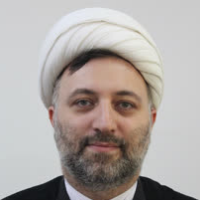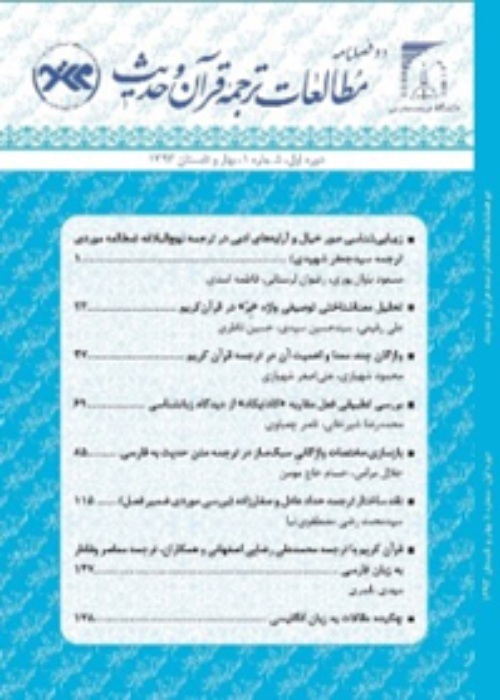The use of semantics in translating the article "Nafaq" in the Holy Quran
One of the means of translating the Quran is to pay attention to the origin of the meaning of the words of the verses, which paves the way for explaining the meaning of the text. To understand the main words in the verses, the principle of basic meaning, etymology and its meaning in different contexts should be considered. One of the most frequent words in the Holy Quran is the words taken from the article "Nafaq" in a way that for finding an equivalence, the two words "charity" and "hypocrite" are always considered independent due to semantic distance and positive and negative emotional connotation because of not paying attention to the derivation from the principle of matter, and they show the meanings away from the basic meaning. The present research seeks to answer the questions in a descriptive-analytical method, what semantic course has the article "Nafaq" gone through and what components has it in this course? And what is the semantic relationship between the derivatives of this article? The findings of the research indicate that in pre-Islamic Arabic texts and their common scientific language, the word "Nafaq" was used in the meaning of "hole". The Holy Quran created a special culture for the meaning of this word and based on meanings of the hole and the rift, the three words "hypocrite", "charity" and "alimony" has been conceptualized from the article "Nafaq". The difference is that in Quran and in the light of the prototype view, the meanings of "Nafaq" are more limited and it is used in the two areas of charity and spending wealth, as well as hypocrisy and duplicity in beliefs. Based on the original prototype in the scientific language, these meanings have been illustrated and conceptualized in a way that it is necessary for the translators to pay attention to these conceptualizations in the translation of the Quran.
-
Examining the commentary of "Wahlol Oqdatan men Lesani" (unlock the knot from my tongue) based on genealogy of story of Moses and Gabriel
Kamran Ovisi*
Journal of The Holy Quran And Islamic Texts, Autumn 2025 -
Applying the "applied structural semantics" method is an efficient tool to discover the structure and purpose of the surah; (case study of Surah Juma)
*, Mahdia Aliabadi Rawri, Javad Salmanzadeh
Irainian Journal of The Knowledge Studies in The Islamic University, Winter 2025 -
A Study of Strategies for Promoting the Individual Dimension of Social Health in the Holy Quran "Case Study of Surah Al-Hujurat"
Roohallah Mohammadalinejad Omran *, Alireza Fazeli
Quarterly of Counseling Culture and Psychotherapy, -
Validation of the Phrase "Narrating from the Weak Narrators" in the Character of Ahmad bin Muhammad bin Khalid al_Barqi Based on the Book "al-Mahasen"
Robabe Azizi *, Roohallah Mohammadalinejadomran
Studies on Understandig Hadith, -
Evaluating the impact of the interpreter's gender on the interpretation of the text; A case study of verse 34 of Surah Nisa
*
Irainian Journal of The Knowledge Studies in The Islamic University, Summer 2024





